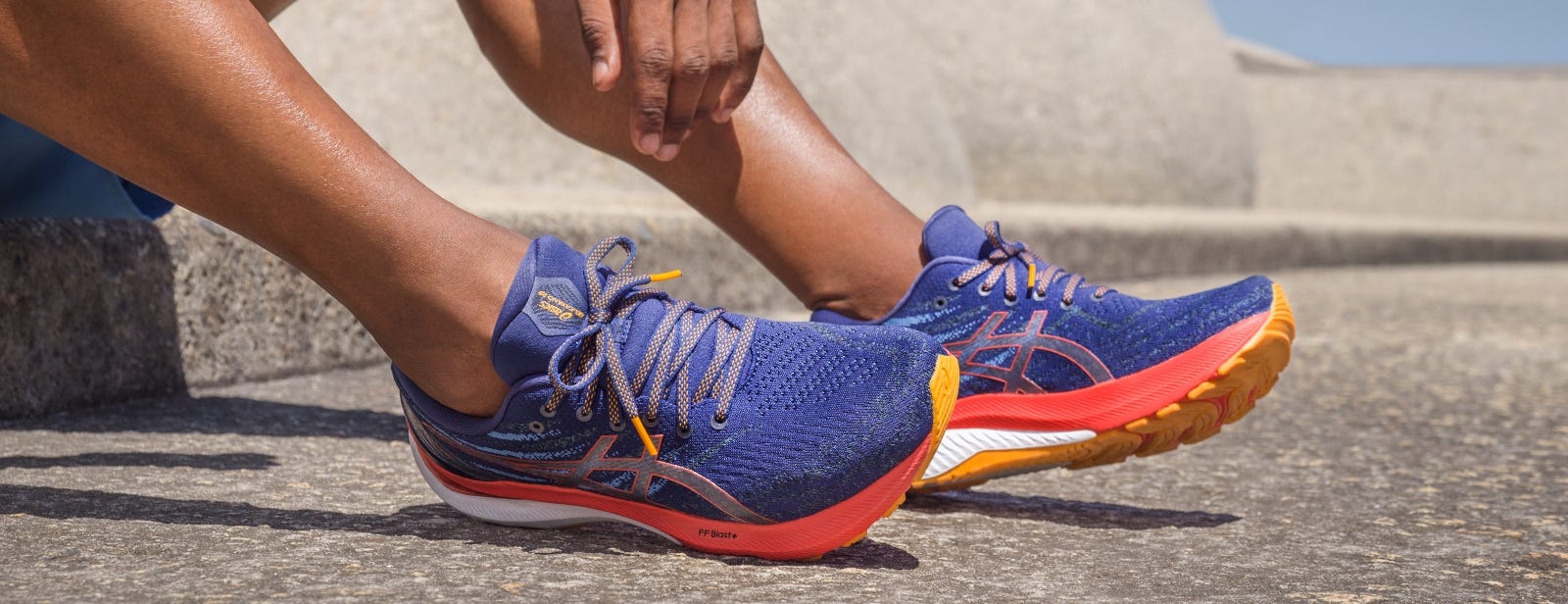
How to Choose Running Shoes for Wide Feet | ASICS
April 27, 2023
Picking running shoes that fit your feet size and width is important. Learn how to find the right wide running shoes for you and which options ASICS offers.
What are wide running shoes?
What are wide running shoes and what makes them different? Wide running shoes are specifically designed with arches, contours and lacing systems that accommodate the needs of runners with wide feet by providing support in essential locations.
Wide running shoes designed for higher volume feet that keep the length in line with your foot size, but offer greater side-to-side and bottom-to-top room to accommodate wide feet. With options for both men and women, you can find recommended ASICS wide running shoes for you.
How do you know if you need wide running shoes?
Should you consider wide running shoes? If you're running in a regular-width shoe and noticing any of the following signs, a wider shoe could be a better option.
1. Your running shoes are stretched or bulged on the sides
Take a look at your current running shoes. Are they stretched and projecting outward along the sides? If so, your running shoes might be too narrow.
2. Your regular-sized running shoes don't fit
If you buy running shoes in the same size as your regular shoes, but they feel too snug, you may want to try on a wider shoe.
3. You're getting blisters or bunions from running
Foot injuries like blisters or bunions form when your shoe puts pressure and friction on your foot. If your foot is wide, these injuries can be common and debilitating.
4. The pain in your feet increases toward the end of your run
A running shoe that feels just a little tight at the beginning of your run may become uncomfortably snug by the end as your soft tissues naturally swell.
5. Your foot doesn't feel supported when you run
If your running shoes feel like they’re lacking arch support or like the laces apply pressure to the wrong parts of your feet, you may want to consider wide running shoes.
Which ASICS shoes are recommended for wide feet?
When it comes to how to choose wide shoes for running, ASICS offers a variety of options.
The recommended:
Recommended wide shoe for neutral feet: GEL-NIMBUS® 25 (Wide)
The engineered mesh upper of the GEL-NIMBUS® 25 (Wide) shoe provides support that accommodates a wider foot and moves seamlessly through your stride. FF BLAST™ PLUS ECO cushioning provides lightweight impact absorption. The shoe’s sole features PureGEL™ technology, which improves cushioning in the heel while still maintaining a lightweight.
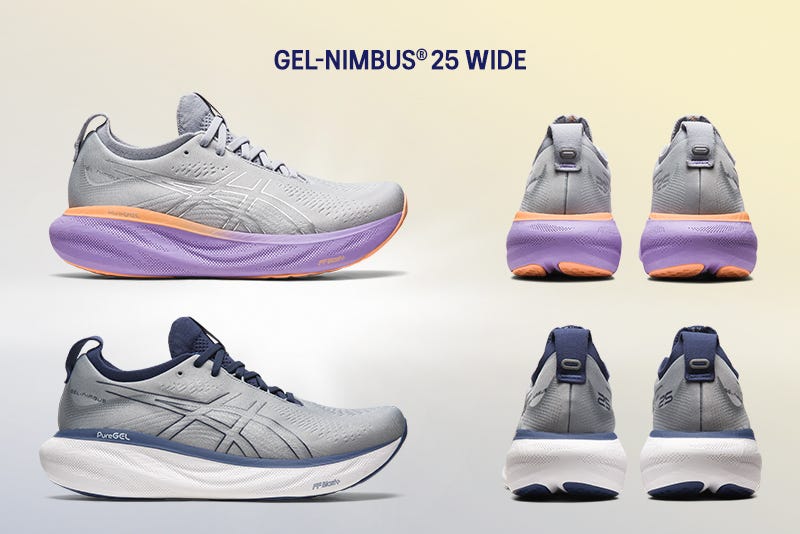
Recommended wide stability shoe for overpronators: GEL-KAYANO ® 29 (Wide)
The GEL-KAYANO ® 29 (Wide) model is one of the best ASICS wide running shoes for providing a stable running experience with a highly responsive feel underfoot. The heel counter cradles your foot as the FF BLAST™ PLUS technology in the midsole provides cushioning and an energized rebound. The LITETRUSS™ technology on the inside angle of the midsole helps keep your foot from rolling too far inward during your stride. An external heel counter helps keep your foot stable.
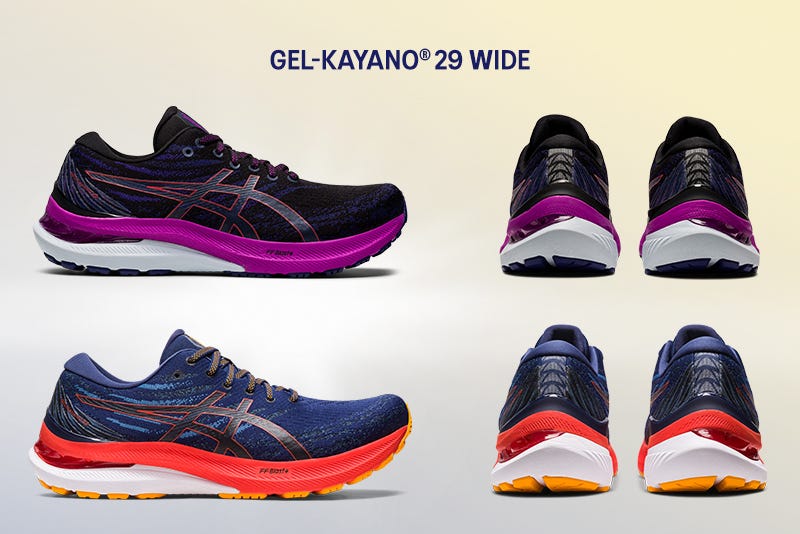
Recommended wide shoe for tempo runs and races: MAGIC SPEED™ 2 (Wide)
What are the best ASICS running shoes for wide feet if you're doing tempo runs? The MAGIC SPEED™ 2 (Wide) running shoe is built for speed, with a full-length carbon and TPU plate that are combined in the midsole to add structure. This helps propel your foot forward with minimal pronation issues. The engineered mesh upper provides support over your foot without binding it.
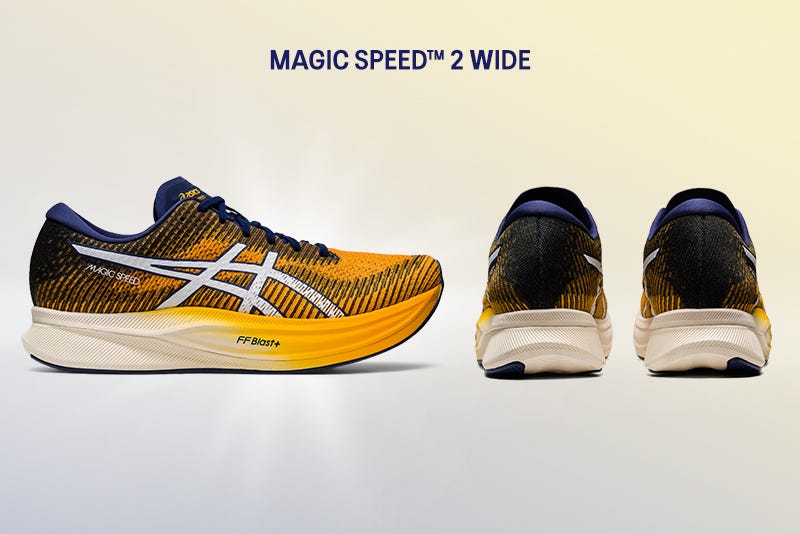
Recommended extra wide stability shoe: GT-2000™ 11 (4E)
For runners with extra wide feet, the GT-2000™ 11 (4E) shoe can be a great option. Rearfoot GEL™ technology helps absorb more impact, while an updated midsole with FF BLAST™ cushioning further softens landings and provides a responsive rebound. LITETRUSS™ technology is positioned on the inside of the midsole to help improve stability and prevent your foot from rolling too far inward.
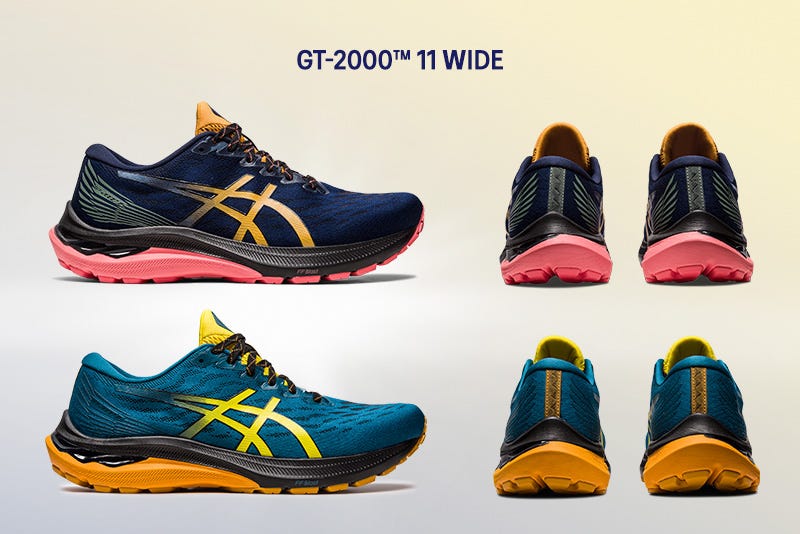
Understanding ASICS wide running shoe sizes
For men, wide shoes are marked as 2E, which is also extra wide for women. Extra wide running shoes for men are marked as 4E. Our width classification guide makes it easier to determine the best ASICS wide running shoes and sizes for you.
Tips for choosing running shoes for wide feet
The following tips can help ensure you find the best ASICS running shoes for wide feet.
1. Measure the width of your feet
ASICS recommends you measure at night, after you have been on your feet all day. Your feet tend to swell throughout the day, so measure them at their widest.
- Stand with your feet on two pieces of paper, one for each foot.
- Use a pen or marker to trace around your feet.
- Use a ruler to measure across the widest part of your foot and the length of your foot, usually from the big toe or second toe to your heel.
- Measure both feet, as your feet may vary slightly in size.
According to this study, a foot width of about 110 mm is considered to be wide, while a foot width of around 94 mm is considered to be narrow.
2. Wear your socks when you try on running shoes
Measure your feet with the socks you usually wear to run, so that you can accommodate them in the measurements. A shoe that’s comfortable in bare feet can be uncomfortably snug once wearing socks.
3. Research your gait and foot shape
By getting a gait analysis, you can determine your foot’s pronation and find out if you have high, low or fallen arches. The recommended ASICS wide running shoes for you will accommodate your gait as well as your foot size.
Don’t let poor-fitting running shoes stop you from achieving your goals. ASICS offers a variety of wide running shoes that are designed for improved comfort, fit and added stability.
Please note: This information does not contain or constitute medical advice or a medical opinion, and it is provided for informational purposes only. You should always consult a qualified and licensed medical professional prior to beginning or modifying any diet or exercise program.

